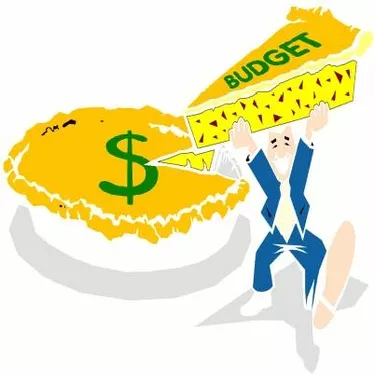
Line item budgets help businesses, entrepreneurs and heads of households to track and monitor available funds, revenues and expenses by type. The accounting tool can be created to reflect year over year differences between same expenditure types or to reflect the difference between budget and expenses for a single year. You can also use the accounting tool to calculate and monitor accrued or projected expenses.
Step 1
Open a new spreadsheet using a software program like Microsoft Excel. At the top of the spreadsheet type the field headings. In field, column A and row 1 (A1), type "Expense Type." In field B1, type "Current Spend." In field C1, type "Prior Year Spend." In field D1, type "Current Year Budget." In field E1, type "Remaining Spend for Current Year," and in field F1 type "Current Year vs. Prior Year."
Video of the Day
Step 2
Under the "Expense Type" field and on separate rows, list each type of expense you expect to spend money on for the year. Typical line item expense types include "salary," "other payroll expenses," (which includes taxes and health insurance payments) "travel and entertainment," "office supplies," "training," and "marketing and promotion." List the items one after the other on separate rows starting at column A and row 2 (A2) down to A7 or down to however many separate line items you will have expenses for.
Step 3
Define limits. Tab over to field D1, "Current Year Budget." Beginning with field D2, populate this column with the maximum spend allowed for each "Expense Type." For example, for the "Salary" expense type, for three employees who earn $50,000 a year each, you would fill in a budget total of $150,000. Go down the spreadsheet column and fill in the total year budget for each line item expense type.
Step 4
Fill in prior year spend. Tab over to field C1, "Prior Year Spend." Under this column, fill in the total amount of money spent for each expense type for the previous year starting at field C2.
Step 5
At the start of each month, populate the exact amount of money you spent for each line item expense type. Update the total current spend, starting at field B2, for the various expense types each month throughout the year. For example, for the "Salary" expense type in January, you would populate $12,500. In January if you spent $150 on copy paper, $75 on stamps and $280 on printer toner, the total current spend for "Office Supplies" would be $505.
Step 6
Monitor current spend against set budgets. Build a formula into field E2 under "Remaining Spend for the Year" to automatically subtract the "Current Spend," field B2, from the "Current Year Budget," field D2. If you are using Microsoft Excel to create your budget spreadsheet, the formula will look like this: "=D2-B2". Copy and paste this formula down column E until you have filled the formula in for all expense types on the spreadsheet.
Step 7
Create a formula in field F2, "Current Year Spend vs. Prior Year Spend," to track how you are managing your current year budget, field B2, compared to how well you managed your prior year's budget, field C2. If you are using Microsoft Excel, the formula will look like this: "=C2-B2". Copy and paste this formula down column F until you have filled the formula in for all expense types on the spreadsheet
Video of the Day